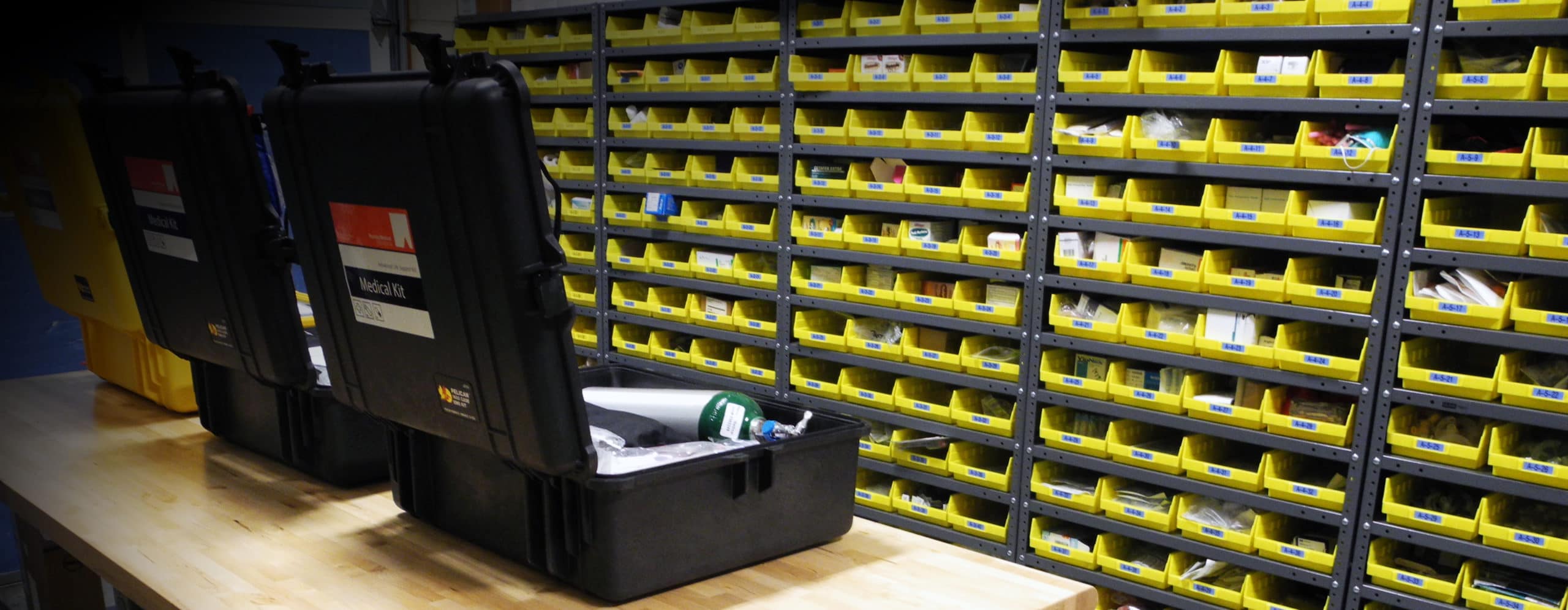Managing medical supplies can feel like a never-ending burden for many occupational medical providers and Health, Safety, and Environment (HSE) Managers. Between putting together first aid kits and keeping track of inventory, the list of tasks goes on and on.
Because we have a first-hand understanding of the unique challenges that come with managing medical supplies, we’ve put together a list of  tips to make it easier. These suggestions are geared towards reducing waste and making responsible purchasing decisions, which in turn help lower costs.
1. Standardize Your Medical Kits
All items in your medical kits should be accurately labeled so you can easily find them while the pressure is on in an emergency. If your workforce speaks multiple languages, make your labels multilingual; language barriers are the last thing you want in the way when remedying  a medical situation.
Including a guide in the kit that explains how to use the items can also be a helpful addition.
Learn more about our medical kits.
2. Familiarize Yourself with Medical Items
Waste is a common issue in the medical field. Most often, medical supplies go to waste because someone is unfamiliar with an item. Many medical supplies must remain unopened until time of use to ensure sterility. Once an item is opened, it cannot be saved for later use.
The best way to reduce waste is to familiarize yourself, and anyone else who may use them, with the medical items. Additionally, it can be helpful to keep some items on hand for the specific purpose of training and practice.
3. Reduce Distance Between Items
Many medical supplies are needed at the spur of the moment, and often get misplaced. Because of this, items often get reordered because they can’t be found—even if the stock isn’t actually low.
Reduce the distance between storage areas for medical supplies as much as possible. Keeping items close by, easily accessible, and in consistent locations decreases redundant inventory. This also lowers stress and response time during an emergency.
4. Protect Your Supplies
It’s best practice to store medical supplies must in durable containers. Most manufacturers of soft medical goods do not intend for their supplies to stay in the shipping boxes they arrive in.
Prevent breakage and over-stocking by removing supplies from their original packaging and storing them in durable, see-through containers. Not only will the supplies stay safe, clear containers allow medical providers to find the item they’re looking for with ease and speed.
5. Simplify Your Inventory System
Inventory systems can quickly become overly complex and frustrating. This can lead to increased supply orders based on hunches and desires rather than an accurate inventory count.
Taking the time to create a simple and easy-to-use inventory system increases the quality of care and compliance by your medical providers. Implementing a digital inventory system reduces confusion between team members, and allows purchasers to easily track what items need reordering. Using barcode scanning (available on many smartphones) ensures that medical providers track and order exactly the items they mean to and lowers accidental reordering of unnecessary items.
6. Monitor Supply Orders
Ordering guidelines for medical supplies should be strict, and if possible, someone in the chain of purchasing should oversee orders to prevent preferential ordering from one provider to the next.
While there are clear exceptions to this rule (sterile glove type, preferred personal protective equipment, etc.), enforcing guidelines help increase compliance and lower unnecessary purchases. Be strict in your ordering guidelines.
After implementing these tips, it’s best to review them every six months to a year. There’s always something that to improve. Consistent review is the best way to find out what it is and make a plan of action.
If you would like help implementing these medical supply management systems, or would like to learn more about our equipment and supply services, please contact us below.


